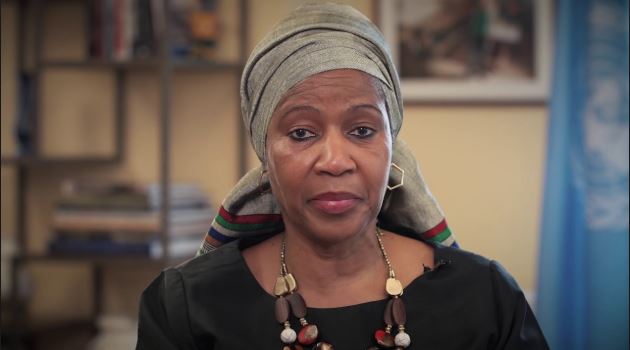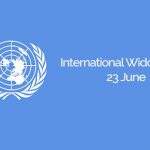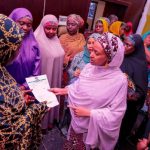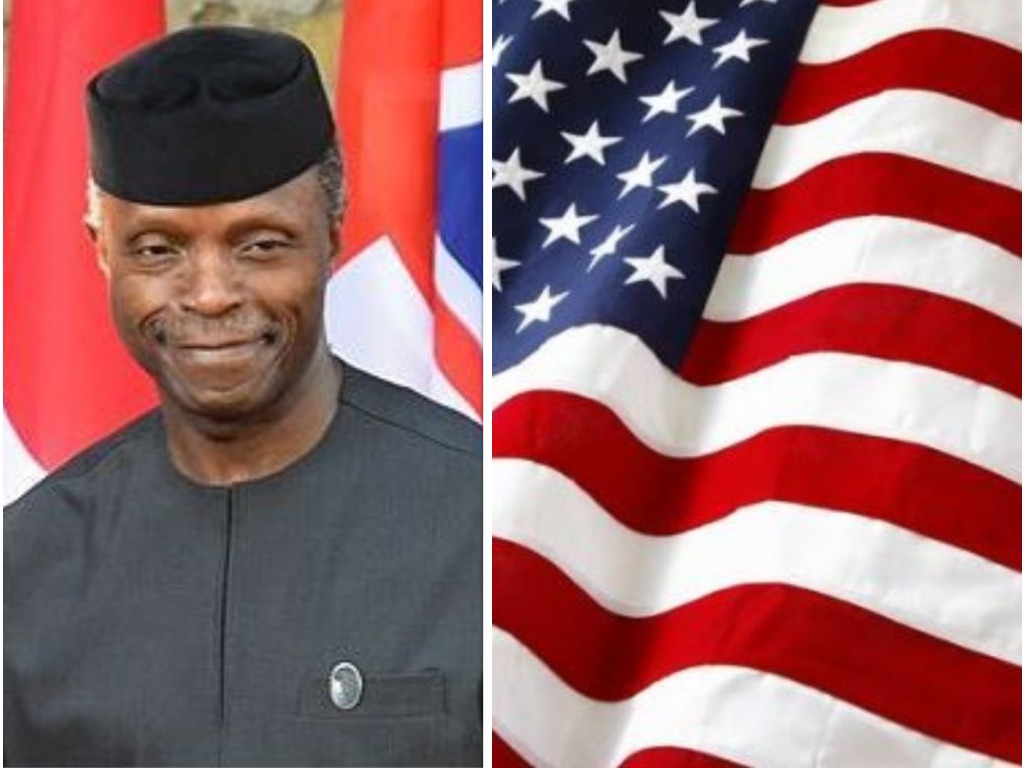Families sustain our cultures and economies, providing love and nurturing, support and nourishment, especially in times of hardship or conflict. Yet all too often, families can also be places of violence and discrimination for women and girls, with widows being some of the most affected, with little recourse.
When a woman’s value is contingent on having a husband, widowhood can force women out of family structures entirely, leaving them particularly vulnerable to multi-dimensional poverty, loneliness and isolation. We know that poorer women are more likely to experience widowhood in the first place, due to a larger age gap between spouses in poorer households—something which is often sustained by harmful practices like child marriage—and the lower life expectancy of poor men. Many widows also struggle to maintain economic security in the face of discriminatory inheritance laws. Even in places where legislation exists to protect women from these situations, widows are often subjected to eviction and property grabbing.
Despite being present in every society in significant numbers, widows remain largely unseen, with correspondingly weak support for the challenges they face. According to the latest figures (2010), 14.6 per cent of women aged 55–59 globally were widowed. While that age bracket includes a significant proportion of women, it does not capture the full picture. Widows can also be younger women who were married as girls to much older men whose deaths, well before their own old age, can leave them with little or no access to inheritance, property or livelihood opportunities. The struggle to support themselves and their children in these conditions sets women up for a lifetime of disadvantage and fuels cycles of poverty across generations.
These dynamics are at play in societies around the world, and urgently require action to better protect and sustain widows. There are several steps that governments can take, including gearing policy efforts to support income security and economic participation for those who are most vulnerable and at higher risk of poverty, such as widows. For instance, Member States can implement and build upon the commitment they made at the 63rd Commission on the Status of Women in March 2019 to invest in and strengthen family-oriented policies and programmes, including to“ensure that adequate measures are in place to protect and support women, including in cases of widowhood, such as access to the full range of social services and access to justice…”. Taking forward such commitments will be key to ensuring that widows to can live with dignity and autonomy, wherever they are.
On this International Widows’ Day, we recognize widows in all their diversity, and acknowledge the need to integrate them fully and visibly into our work on gender equality so that we break cycles of poverty and disadvantage and ensure that all widows can enjoy their full human rights.
Phumzile Mlambo-Ngcuka
Director, U.N Women
Families sustain our cultures and economies, providing love and nurturing, support and nourishment, especially in times of hardship or conflict. Yet all too often, families can also be places of violence and discrimination for women and girls, with widows being some of the most affected, with little recourse.
When a woman’s value is contingent on having a husband, widowhood can force women out of family structures entirely, leaving them particularly vulnerable to multi-dimensional poverty, loneliness and isolation. We know that poorer women are more likely to experience widowhood in the first place, due to a larger age gap between spouses in poorer households—something which is often sustained by harmful practices like child marriage—and the lower life expectancy of poor men. Many widows also struggle to maintain economic security in the face of discriminatory inheritance laws. Even in places where legislation exists to protect women from these situations, widows are often subjected to eviction and property grabbing.
Despite being present in every society in significant numbers, widows remain largely unseen, with correspondingly weak support for the challenges they face. According to the latest figures (2010), 14.6 per cent of women aged 55–59 globally were widowed. While that age bracket includes a significant proportion of women, it does not capture the full picture. Widows can also be younger women who were married as girls to much older men whose deaths, well before their own old age, can leave them with little or no access to inheritance, property or livelihood opportunities. The struggle to support themselves and their children in these conditions sets women up for a lifetime of disadvantage and fuels cycles of poverty across generations.
These dynamics are at play in societies around the world, and urgently require action to better protect and sustain widows. There are several steps that governments can take, including gearing policy efforts to support income security and economic participation for those who are most vulnerable and at higher risk of poverty, such as widows. For instance, Member States can implement and build upon the commitment they made at the 63rd Commission on the Status of Women in March 2019 to invest in and strengthen family-oriented policies and programmes, including to“ensure that adequate measures are in place to protect and support women, including in cases of widowhood, such as access to the full range of social services and access to justice…”. Taking forward such commitments will be key to ensuring that widows to can live with dignity and autonomy, wherever they are.
On this International Widows’ Day, we recognize widows in all their diversity, and acknowledge the need to integrate them fully and visibly into our work on gender equality so that we break cycles of poverty and disadvantage and ensure that all widows can enjoy their full human rights.
Phumzile Mlambo-Ngcuka
Director, U.N Women
Families sustain our cultures and economies, providing love and nurturing, support and nourishment, especially in times of hardship or conflict. Yet all too often, families can also be places of violence and discrimination for women and girls, with widows being some of the most affected, with little recourse.
When a woman’s value is contingent on having a husband, widowhood can force women out of family structures entirely, leaving them particularly vulnerable to multi-dimensional poverty, loneliness and isolation. We know that poorer women are more likely to experience widowhood in the first place, due to a larger age gap between spouses in poorer households—something which is often sustained by harmful practices like child marriage—and the lower life expectancy of poor men. Many widows also struggle to maintain economic security in the face of discriminatory inheritance laws. Even in places where legislation exists to protect women from these situations, widows are often subjected to eviction and property grabbing.
Despite being present in every society in significant numbers, widows remain largely unseen, with correspondingly weak support for the challenges they face. According to the latest figures (2010), 14.6 per cent of women aged 55–59 globally were widowed. While that age bracket includes a significant proportion of women, it does not capture the full picture. Widows can also be younger women who were married as girls to much older men whose deaths, well before their own old age, can leave them with little or no access to inheritance, property or livelihood opportunities. The struggle to support themselves and their children in these conditions sets women up for a lifetime of disadvantage and fuels cycles of poverty across generations.
These dynamics are at play in societies around the world, and urgently require action to better protect and sustain widows. There are several steps that governments can take, including gearing policy efforts to support income security and economic participation for those who are most vulnerable and at higher risk of poverty, such as widows. For instance, Member States can implement and build upon the commitment they made at the 63rd Commission on the Status of Women in March 2019 to invest in and strengthen family-oriented policies and programmes, including to“ensure that adequate measures are in place to protect and support women, including in cases of widowhood, such as access to the full range of social services and access to justice…”. Taking forward such commitments will be key to ensuring that widows to can live with dignity and autonomy, wherever they are.
On this International Widows’ Day, we recognize widows in all their diversity, and acknowledge the need to integrate them fully and visibly into our work on gender equality so that we break cycles of poverty and disadvantage and ensure that all widows can enjoy their full human rights.
Phumzile Mlambo-Ngcuka
Director, U.N Women
Families sustain our cultures and economies, providing love and nurturing, support and nourishment, especially in times of hardship or conflict. Yet all too often, families can also be places of violence and discrimination for women and girls, with widows being some of the most affected, with little recourse.
When a woman’s value is contingent on having a husband, widowhood can force women out of family structures entirely, leaving them particularly vulnerable to multi-dimensional poverty, loneliness and isolation. We know that poorer women are more likely to experience widowhood in the first place, due to a larger age gap between spouses in poorer households—something which is often sustained by harmful practices like child marriage—and the lower life expectancy of poor men. Many widows also struggle to maintain economic security in the face of discriminatory inheritance laws. Even in places where legislation exists to protect women from these situations, widows are often subjected to eviction and property grabbing.
Despite being present in every society in significant numbers, widows remain largely unseen, with correspondingly weak support for the challenges they face. According to the latest figures (2010), 14.6 per cent of women aged 55–59 globally were widowed. While that age bracket includes a significant proportion of women, it does not capture the full picture. Widows can also be younger women who were married as girls to much older men whose deaths, well before their own old age, can leave them with little or no access to inheritance, property or livelihood opportunities. The struggle to support themselves and their children in these conditions sets women up for a lifetime of disadvantage and fuels cycles of poverty across generations.
These dynamics are at play in societies around the world, and urgently require action to better protect and sustain widows. There are several steps that governments can take, including gearing policy efforts to support income security and economic participation for those who are most vulnerable and at higher risk of poverty, such as widows. For instance, Member States can implement and build upon the commitment they made at the 63rd Commission on the Status of Women in March 2019 to invest in and strengthen family-oriented policies and programmes, including to“ensure that adequate measures are in place to protect and support women, including in cases of widowhood, such as access to the full range of social services and access to justice…”. Taking forward such commitments will be key to ensuring that widows to can live with dignity and autonomy, wherever they are.
On this International Widows’ Day, we recognize widows in all their diversity, and acknowledge the need to integrate them fully and visibly into our work on gender equality so that we break cycles of poverty and disadvantage and ensure that all widows can enjoy their full human rights.
Phumzile Mlambo-Ngcuka
Director, U.N Women
Families sustain our cultures and economies, providing love and nurturing, support and nourishment, especially in times of hardship or conflict. Yet all too often, families can also be places of violence and discrimination for women and girls, with widows being some of the most affected, with little recourse.
When a woman’s value is contingent on having a husband, widowhood can force women out of family structures entirely, leaving them particularly vulnerable to multi-dimensional poverty, loneliness and isolation. We know that poorer women are more likely to experience widowhood in the first place, due to a larger age gap between spouses in poorer households—something which is often sustained by harmful practices like child marriage—and the lower life expectancy of poor men. Many widows also struggle to maintain economic security in the face of discriminatory inheritance laws. Even in places where legislation exists to protect women from these situations, widows are often subjected to eviction and property grabbing.
Despite being present in every society in significant numbers, widows remain largely unseen, with correspondingly weak support for the challenges they face. According to the latest figures (2010), 14.6 per cent of women aged 55–59 globally were widowed. While that age bracket includes a significant proportion of women, it does not capture the full picture. Widows can also be younger women who were married as girls to much older men whose deaths, well before their own old age, can leave them with little or no access to inheritance, property or livelihood opportunities. The struggle to support themselves and their children in these conditions sets women up for a lifetime of disadvantage and fuels cycles of poverty across generations.
These dynamics are at play in societies around the world, and urgently require action to better protect and sustain widows. There are several steps that governments can take, including gearing policy efforts to support income security and economic participation for those who are most vulnerable and at higher risk of poverty, such as widows. For instance, Member States can implement and build upon the commitment they made at the 63rd Commission on the Status of Women in March 2019 to invest in and strengthen family-oriented policies and programmes, including to“ensure that adequate measures are in place to protect and support women, including in cases of widowhood, such as access to the full range of social services and access to justice…”. Taking forward such commitments will be key to ensuring that widows to can live with dignity and autonomy, wherever they are.
On this International Widows’ Day, we recognize widows in all their diversity, and acknowledge the need to integrate them fully and visibly into our work on gender equality so that we break cycles of poverty and disadvantage and ensure that all widows can enjoy their full human rights.
Phumzile Mlambo-Ngcuka
Director, U.N Women
Families sustain our cultures and economies, providing love and nurturing, support and nourishment, especially in times of hardship or conflict. Yet all too often, families can also be places of violence and discrimination for women and girls, with widows being some of the most affected, with little recourse.
When a woman’s value is contingent on having a husband, widowhood can force women out of family structures entirely, leaving them particularly vulnerable to multi-dimensional poverty, loneliness and isolation. We know that poorer women are more likely to experience widowhood in the first place, due to a larger age gap between spouses in poorer households—something which is often sustained by harmful practices like child marriage—and the lower life expectancy of poor men. Many widows also struggle to maintain economic security in the face of discriminatory inheritance laws. Even in places where legislation exists to protect women from these situations, widows are often subjected to eviction and property grabbing.
Despite being present in every society in significant numbers, widows remain largely unseen, with correspondingly weak support for the challenges they face. According to the latest figures (2010), 14.6 per cent of women aged 55–59 globally were widowed. While that age bracket includes a significant proportion of women, it does not capture the full picture. Widows can also be younger women who were married as girls to much older men whose deaths, well before their own old age, can leave them with little or no access to inheritance, property or livelihood opportunities. The struggle to support themselves and their children in these conditions sets women up for a lifetime of disadvantage and fuels cycles of poverty across generations.
These dynamics are at play in societies around the world, and urgently require action to better protect and sustain widows. There are several steps that governments can take, including gearing policy efforts to support income security and economic participation for those who are most vulnerable and at higher risk of poverty, such as widows. For instance, Member States can implement and build upon the commitment they made at the 63rd Commission on the Status of Women in March 2019 to invest in and strengthen family-oriented policies and programmes, including to“ensure that adequate measures are in place to protect and support women, including in cases of widowhood, such as access to the full range of social services and access to justice…”. Taking forward such commitments will be key to ensuring that widows to can live with dignity and autonomy, wherever they are.
On this International Widows’ Day, we recognize widows in all their diversity, and acknowledge the need to integrate them fully and visibly into our work on gender equality so that we break cycles of poverty and disadvantage and ensure that all widows can enjoy their full human rights.
Phumzile Mlambo-Ngcuka
Director, U.N Women
Families sustain our cultures and economies, providing love and nurturing, support and nourishment, especially in times of hardship or conflict. Yet all too often, families can also be places of violence and discrimination for women and girls, with widows being some of the most affected, with little recourse.
When a woman’s value is contingent on having a husband, widowhood can force women out of family structures entirely, leaving them particularly vulnerable to multi-dimensional poverty, loneliness and isolation. We know that poorer women are more likely to experience widowhood in the first place, due to a larger age gap between spouses in poorer households—something which is often sustained by harmful practices like child marriage—and the lower life expectancy of poor men. Many widows also struggle to maintain economic security in the face of discriminatory inheritance laws. Even in places where legislation exists to protect women from these situations, widows are often subjected to eviction and property grabbing.
Despite being present in every society in significant numbers, widows remain largely unseen, with correspondingly weak support for the challenges they face. According to the latest figures (2010), 14.6 per cent of women aged 55–59 globally were widowed. While that age bracket includes a significant proportion of women, it does not capture the full picture. Widows can also be younger women who were married as girls to much older men whose deaths, well before their own old age, can leave them with little or no access to inheritance, property or livelihood opportunities. The struggle to support themselves and their children in these conditions sets women up for a lifetime of disadvantage and fuels cycles of poverty across generations.
These dynamics are at play in societies around the world, and urgently require action to better protect and sustain widows. There are several steps that governments can take, including gearing policy efforts to support income security and economic participation for those who are most vulnerable and at higher risk of poverty, such as widows. For instance, Member States can implement and build upon the commitment they made at the 63rd Commission on the Status of Women in March 2019 to invest in and strengthen family-oriented policies and programmes, including to“ensure that adequate measures are in place to protect and support women, including in cases of widowhood, such as access to the full range of social services and access to justice…”. Taking forward such commitments will be key to ensuring that widows to can live with dignity and autonomy, wherever they are.
On this International Widows’ Day, we recognize widows in all their diversity, and acknowledge the need to integrate them fully and visibly into our work on gender equality so that we break cycles of poverty and disadvantage and ensure that all widows can enjoy their full human rights.
Phumzile Mlambo-Ngcuka
Director, U.N Women
Families sustain our cultures and economies, providing love and nurturing, support and nourishment, especially in times of hardship or conflict. Yet all too often, families can also be places of violence and discrimination for women and girls, with widows being some of the most affected, with little recourse.
When a woman’s value is contingent on having a husband, widowhood can force women out of family structures entirely, leaving them particularly vulnerable to multi-dimensional poverty, loneliness and isolation. We know that poorer women are more likely to experience widowhood in the first place, due to a larger age gap between spouses in poorer households—something which is often sustained by harmful practices like child marriage—and the lower life expectancy of poor men. Many widows also struggle to maintain economic security in the face of discriminatory inheritance laws. Even in places where legislation exists to protect women from these situations, widows are often subjected to eviction and property grabbing.
Despite being present in every society in significant numbers, widows remain largely unseen, with correspondingly weak support for the challenges they face. According to the latest figures (2010), 14.6 per cent of women aged 55–59 globally were widowed. While that age bracket includes a significant proportion of women, it does not capture the full picture. Widows can also be younger women who were married as girls to much older men whose deaths, well before their own old age, can leave them with little or no access to inheritance, property or livelihood opportunities. The struggle to support themselves and their children in these conditions sets women up for a lifetime of disadvantage and fuels cycles of poverty across generations.
These dynamics are at play in societies around the world, and urgently require action to better protect and sustain widows. There are several steps that governments can take, including gearing policy efforts to support income security and economic participation for those who are most vulnerable and at higher risk of poverty, such as widows. For instance, Member States can implement and build upon the commitment they made at the 63rd Commission on the Status of Women in March 2019 to invest in and strengthen family-oriented policies and programmes, including to“ensure that adequate measures are in place to protect and support women, including in cases of widowhood, such as access to the full range of social services and access to justice…”. Taking forward such commitments will be key to ensuring that widows to can live with dignity and autonomy, wherever they are.
On this International Widows’ Day, we recognize widows in all their diversity, and acknowledge the need to integrate them fully and visibly into our work on gender equality so that we break cycles of poverty and disadvantage and ensure that all widows can enjoy their full human rights.
Phumzile Mlambo-Ngcuka
Director, U.N Women














